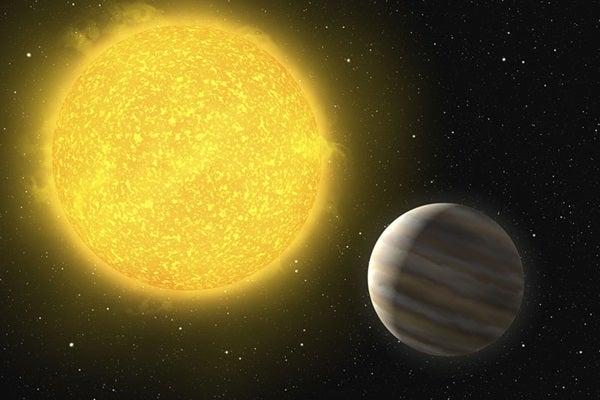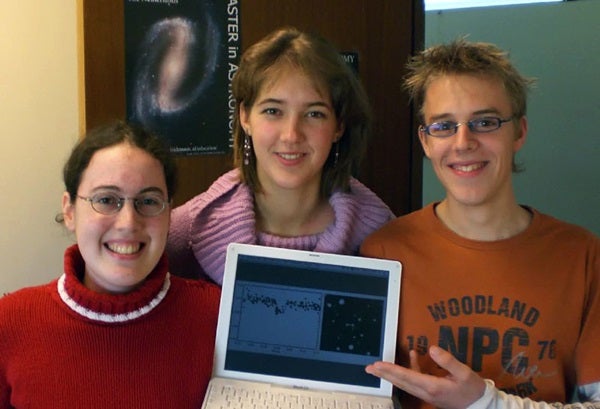Three undergraduate students from Leiden University in the Netherlands discovered an extrasolar planet. The find, which turned up during their research project, is about 5 times as massive as Jupiter. This is also the first planet discovered orbiting a fast-rotating hot star.
The students were testing a method of investigating the light fluctuations of thousands of stars in the optical gravitational lensing experiment (OGLE) database. One of the star’s brightness decreased by about 1 percent for 2 hours every 2.5 days. Follow-up observations, taken with the European Southern Observatory’s (ESO) Very Large Telescope in Chile, confirmed that a planet passing in front of the star, blocking part of the starlight at regular intervals, causes this phenomenon.
According to Ignas Snellen, supervisor of the research project, the discovery was a surprise. “The project was actually meant to teach the students how to develop search algorithms. But they did so well that there was time to test their algorithm on a so far unexplored database. At some point they came into my office and showed me this light curve. I was completely taken aback!”
The planet is given the prosaic name OGLE2-TR-L9b. “But amongst ourselves we call it ReMeFra-1, after Remco, Meta, and myself,” said Vuijsje.
The planet was discovered by looking at the brightness variations of about 15,700 stars, that the OGLE survey observed once or twice per night between 1997 and 2000. Because the data had been made public, it was a good test case for the students’ algorithm that showed for one of the stars observed, OGLE-TR-L9, the variations could be due to a transit — the passage of a planet in front of its star. The team then used the gamma-ray burst optical/near-infrared detector (GROND) instrument on the 2.2 m telescope at ESO’s La Silla Observatory to find out more about the star and the planet.
“But to make sure it was a planet and not a brown dwarf or a small star that was causing the brightness variations, we needed to resort to spectroscopy, and, for this, we were glad we could use ESO’s Very Large Telescope,” said Snellen.
The planet lies at only 3 percent of the Earth-Sun distance from its star, making it very hot and much larger than normal planets.
The spectroscopy also showed that the star is 12,632° F (7,000° C), or about 1,800° F (1,000° C) hotter than the Sun. It is the hottest star with a planet ever discovered. The radial velocity method — used to discover most extrasolar planets known — is less efficient on stars with these characteristics. “This makes this discovery even more interesting,” Snellen said.











